Contents
A wobbler is a bait for fishing that imitates live fish and attracts the attention of a predator. The history of the appearance of the wobbler dates back to 1894, when the American James Heddon made an interesting observation. While at the dam, he planed wood, and when he got home he threw the waste into the water. They were immediately attacked by perches.
Fascinated by this discovery, James conducted a series of experiments, and in April 1902 he patented a bait for catching fish. Since then, they have gained great popularity and a number of transformations. Japanese wobblers deserve the most attention, as well as Finnish wobblers, which are distinguished by their quality and meticulous attention to detail. Today, this fish bait is offered in a wide range and with a large set of characteristics.
Classification of wobblers according to body shape
This parameter affects the features of the application, purpose, as well as the range and accuracy of the throw. All this is directly affected by the shape of the body of the model.
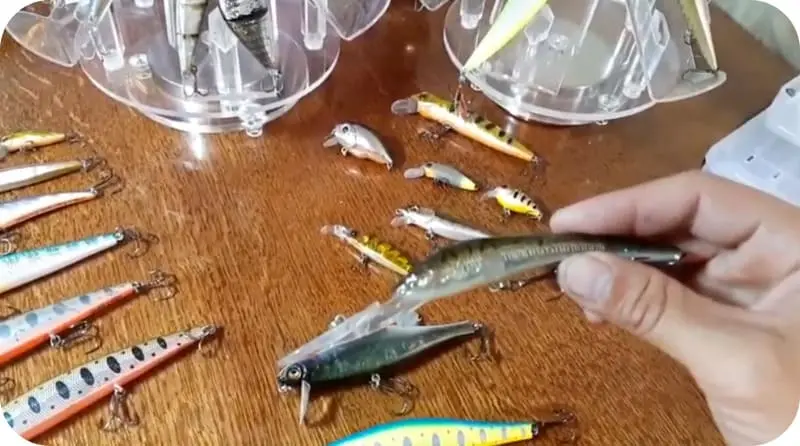
Wobblers are:
- with a blade;
- without blade;
- composite.
In addition to the above, the presence of blades gives the bait an appropriate trajectory of movement (trembling, yaw). The angle of the vane controls the depth of the dive.
Bladed wobblers
Knowledge of certain characteristics of baits is necessary for every fisherman. Thus, you can choose the right wobbler for a certain type of predatory fish.
Minnow
From the name it is clear that this model came to us from abroad. Translated from English means a small minnow fish. It is an elongated body shape tapering at the tail. In the head there is a special blade that allows you to dive the bait to a certain depth.
Most models of this type have blades located at an angle of 30 – 60 degrees. Some are equipped with large “nose”, allowing you to go to great depths. Due to their light weight, minnows are used as wobblers for ultralight. Thus, the hand does not get tired.
Characteristic features unique to minnows:
- an oblong body with an aspect ratio (length/height) of 5:1;
- the shape can be curved (reminiscent of a banana) or cigar-shaped;
- the presence of a small blade with a landing angle of about 45 degrees;
- are neutrally buoyant.
Minnow is equipped with tees from two to three. The inner part has special channels and cavities that are filled with steel balls to give the necessary balance, movement trajectory and casting distance. The best minnow producer is Japan.
Shad
The wobbler got its name from the American Shad fish from the herring family. The model looks like a small herring. The size varies from 40 to 70 mm, and the weight does not exceed 12 grams. Shed is one of the most popular wobblers among spinning players. With it, chub, pike perch, perch and probes are perfectly caught.
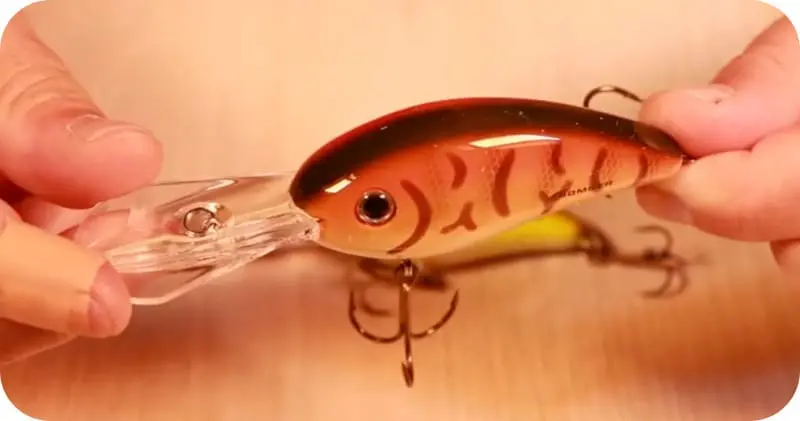
The color scheme is quite diverse, and the body itself has a clear drawing of scales, fins, eyes. In other words, it mimics a real fish in detail. Unlike the previous version, Shad has a shorter shape and a taller body.
The bait is used both in shallow and deep waters. The model has an impressive shoulder blade, which is most often well suited for perch and chub. Such baits are otherwise called deep wobblers. Size 44 – 70 mm, weight 3,8 – 10 grams.
Unlike other types of baits, the Deep Sea Shed holds up well in strong currents. It does not eject to the surface. It also performs well in still water.
Crank (Crank)
It is a short and pot-bellied body. It looks like an insect or a well-fed fry. They are distinguished by dynamic and high-frequency play with a small amplitude of movement. Best used on waters with strong currents. Produced in various variations of buoyancy and depth.
Thanks to its unique shape, Krenk keeps well in the stream. That is why they are called wobblers for the current. They work well with uniform wiring and even at low speeds. Most often used for catching chub, asp, perch, ide and trout. In terms of workmanship, Polish wobblers of this type are especially valued.
Fat (Fat)
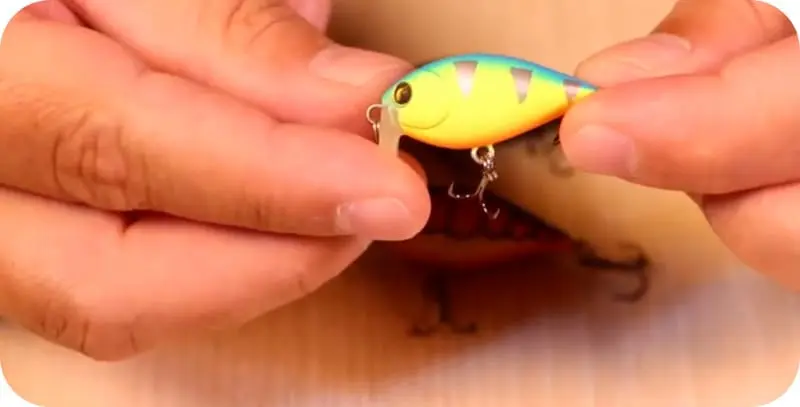
The least popular among all wobblers. Outwardly, it does not resemble any of the natural fish. That is why this model is used less often than others. Especially among beginner spinners.
Translated from English, Fat means fat, and it really is. The bait is made in a three-dimensional and almost round drop-shaped form. Most often, Fat is used in shallow waters. On sale there are only a few models that allow you to dive to a depth of more than 1,5 meters. The reason for this is a voluminous body and in order to drown it you will have to use sinkers, thereby heavily loading the tackle.
Bladeless wobblers
The name speaks for itself. The bait without blades is most often used by experienced fishermen. This is due to the fact that this type does not have its own game trajectory. The angler creates it himself thanks to a perfect technique. Most often, such wobblers are used when fishing shallow water bodies or on their surface.
Popper
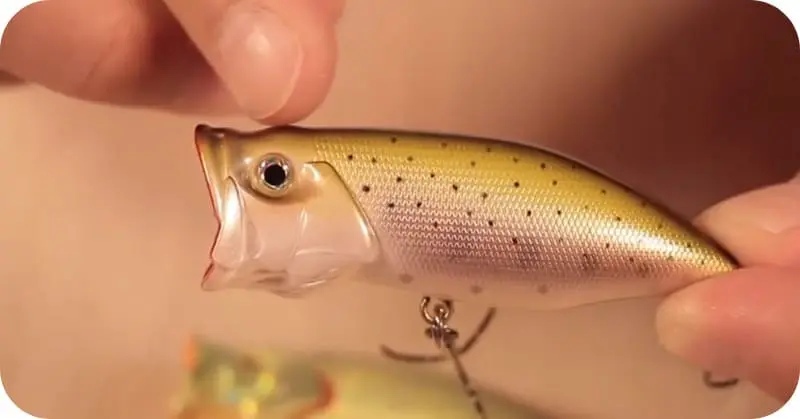
A popper is a surface bladeless bait with a cup-like recess in the nose. It is attractive in that during jerks it can create clapping sounds and thereby attract predators. In another way, Popper is called champing baits.
Walker
From English Walker means “walker, runner”. These are surface cigar-shaped wobblers, as a rule, having two tees (in the central and tail parts). During posting draws a Christmas tree trajectory.
A distinctive feature of the Walker is the attachment loop for the fishing line. In this type, it is located not at the tip, but below (on the chin). This allows you to keep the bait on the surface of the reservoir. Not bad for catching asp, chub, pike, trout and zander.
Глиссер (Sliding)
Despite the English title, the author is a Russian fisherman Konstantin Kuzmin. The name was obtained due to the peculiarity of movement on the water surface, gliding – sliding on the water.
It has the shape of a wedge and imitates a mouse or other inhabitants of the reservoir. The design feature allows you to fish in hard-to-reach places with grassy areas. The convex lower part sets the bait in the same position like a roly-poly. In this case, the hook remains above the water surface. The glider is used for pike fishing in wetlands.
Jerkbait
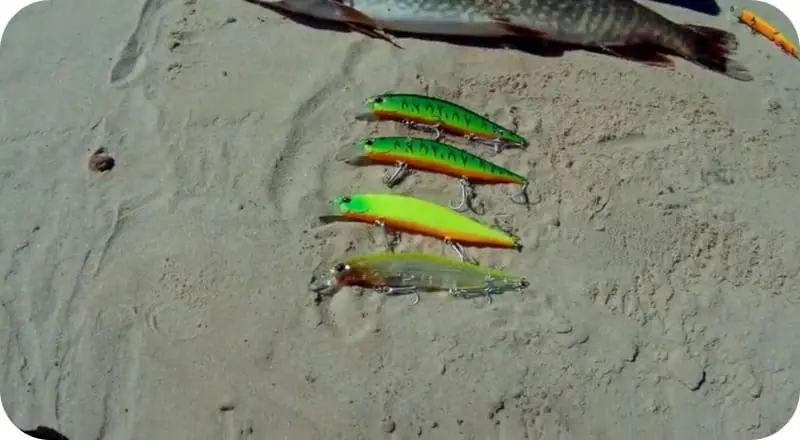
The main feature of this bait is the method of wiring: a jerk and a short stop. That’s what the name Jerkbait says. The wobbler is not suitable for smooth wiring. In this case, the efficiency is zero. Jerking movements with pauses imitate jerky movements that arouse interest in aquatic predators.
Jackbrate is mainly used for pike fishing. The size of the bait allows you to hunt fish of different weights. Suitable even for catching pike up to one kilogram. They are divided according to the level of deepening up to 1,5 meters and more.
Swimbait
Wobbler Swimbait is a multi-part (segmented) large wobbler, two-part or more parts. This feature maximally imitates the realism of fish movements.
The joint is produced with various levels of buoyancy and immersion. Thus, it is possible to choose a bait for reservoirs with different characteristics.
The compound wobbler is ideal for pike fishing. The design feature makes it possible to catch various depths, as well as places with a grassy array.
Stickbait
Wobbler Stickbait is a spindle-shaped universal bait without blades. Literally translated from English means “stick – bait.” Equipped with one or more hooks (single, double, triple).
In some models, “rattles” are installed to additionally attract the attention of a predator. The main feature is aerodynamic properties. Even with a strong wind, a spinner can “shell” large areas of water.
Rattlin (Rattlin)
Sufficiently voluminous baits without blades with almost vertical immersion. The body has flattened sides inherent in bottom fish. In the dorsal part there is a mount for fishing line, which allows you to move almost along the bottom.

At the same time, Rattlin is able to create high-frequency movements with a small amplitude. On some models, noise chambers are installed, which additionally arouse the interest of predatory fish. Great for catching pike, zander and large perches.
Crawler
Surface bladeless bait with wide wings located in the bow. This distinguishes the wobbler from other types. Outwardly, it imitates an insect (beetle) or a small mouse that has fallen into a pond. It is an excellent bait for pike and perch.
Crawlers are available in two types:
- wings folded during flight, which open in the water during posting;
- fixed wings in the open position.
The first type is distinguished by better flight characteristics, but they have poor cross-country ability in grasslands. With fixed wings, on the contrary, it is harder to cast, but they overcome hard-to-reach places well. Therefore, it can be called among anglers as “non-hooking”.
It is recommended to change the Crawler in shallow waters with low vegetation. The wobbler shows itself best in the following reservoirs:
- river;
- dam;
- lake.
It can be used at any time of the year (winter, spring, summer, autumn).
Darter
It is made in the form of a spatula and is well suited for pike fishing. With uniform wiring, you can also hunt zander at night. Mainly used in shallow water. Among fishermen, this type of bait was called “Cork” because of the high ascent rate.
Some models are equipped with two line mounts in the bow, which allows you to adjust the bait’s immersion. With jerky wiring with pauses, Darter is able to imitate a gasping fish that rises to the surface to inhale air. This encourages the pike to attack.
Classification of wobblers according to the degree of buoyancy
Buoyancy is understood as the nature of the movement of the bait in the water. It is divided into three classes.
Floating
These are small wobblers, which, after entering the reservoir, float on its surface. Even at rest, the bait remains on the surface of the reservoir. Wobblers for shallow water are made mainly of wood, plastic or foam.
drowning

Wobblers, which immediately begin to sink to the bottom, are called sinking. As a rule, these are compact and heavy baits with good flight properties. It is mainly used for spinning fishing and at different depths. Also used as a winter wobbler. The period of use is winter – summer.
Suspenders
This class differs in that it dives to a certain depth and hangs in it. Otherwise they are called suspensions. The design has a unique balancing system consisting of a plastic body and an air chamber with weights.
In this way, the suspender can remain in the desired water column. The rating of the best wobblers for pike fishing shows that this type is better suited than the rest.
Classification of wobblers according to the degree of deepening
This classification is indicated on the packaging of the bait and is clearly defined for each wobbler. Most often, two depth limits are specified. They depend on the method of fishing (casting, trolling).
Surface
In turn, they are divided into: ultra-shallow (depth less than 10 cm) and shallow (less than 1,2 meters). This class includes Popper, Walker, Glisser.
medium depth
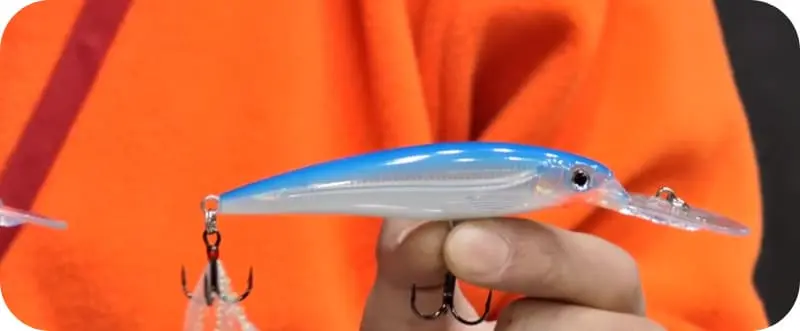
These include lures that dive to a depth of 2 m to 3 m. These characteristics are possessed by rattlins and jerkbaits.
Deep sea
Deep sea, super deep sea and super deep sea. The first class dives to a depth of 4 m, the second to 6 m and the third above. These include krenks and minnows.
In addition to the classic bait, there is an electric wobbler on sale that can hum, vibrate, twitch, glow. On some models, a propeller is installed. In other words, an electronic wobbler attracts the attention of a predator in various ways. The silicone wobbler also shows itself well. Great for pike fishing.
Deciphering the designations on wobblers
The variety of wobblers is determined by marking. This is a description of the characteristics of the model. We present the main notation in the table.
| Buoyancy Marking | |
| F/FT — Floating | |
| A type | Description |
| FF | pop up quickly |
| SF | slowly float up |
| SFF | Floating up very quickly |
| SSF | Floating very slowly |
| S – sinking | |
| FS | sinking fast |
| SS | Slowly drowning |
| SFS | Drowning very quickly |
| FAQ | Sinking very slowly |
| SP – neutral buoyancy or suspenders |
| Depth marking | ||
| A type | Description | Depth |
| SSR | Super-surface wobbler | 0,3 m |
| SR | Surface | 1,2 m |
| MR | medium depth | 2 m |
| MDR | Medium – deep water | 3 m |
| DD/DR | Deep sea wobblers | 4 m |
| SDR | super deep | 6 m |
| XDD/XDR | superdeep | 6 m or more |
In addition, the length of the bait is indicated on the package.
For example:
60F – SR, where the numbers indicate:
- 60 wobbler length in millimeters,
- F – type of buoyancy (floating),
- SR – surface penetration.
Conclusion
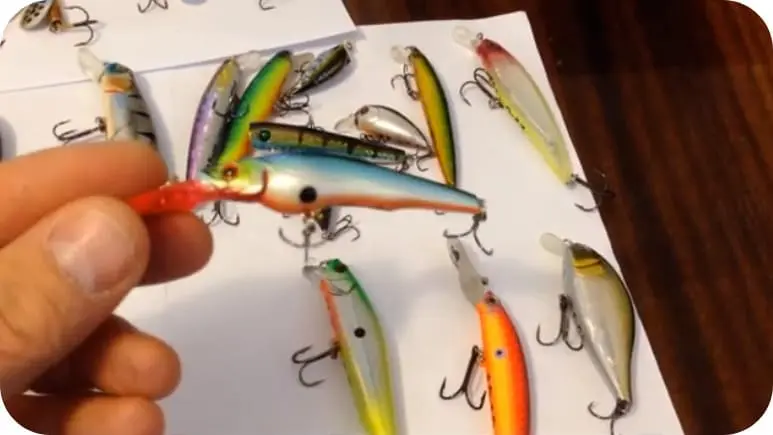
Based on the above, it is clear that before buying this or that bait, it is necessary to study in detail the characteristics, classification and designations. If you don’t plan to buy a souvenir. The success of fishing and a sense of satisfaction will depend on this. In addition, having the necessary knowledge base, you can choose the right wobbler for a particular fish. Try to buy original wobblers. There are many fakes on the market that negatively affect the quality of fishing. This is especially important for beginner fishermen.









